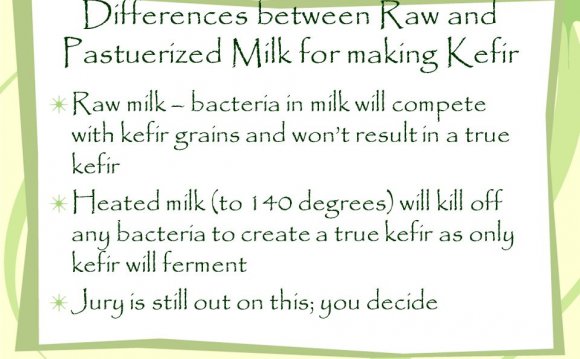
Making raw milk kefir is incredibly easy. Unlike raw milk yogurt, there is no need to keep a separate starter made from pasteurized milk. There are a few special considerations, however, when using raw milk to make milk kefir.
Making raw milk kefir starts with dehydrated milk kefir grains. Before you begin, it is necessary to first activate the grains using pasteurized milk. You can use raw milk to make milk kefir, however it is best to avoid using raw milk for activating the grains. Once the grains are fully activated, you can slowly transition the milk kefir grains to raw milk.
Bacteria Content of Raw Milk
We recommend using the freshest milk possible. Raw milk comes with its own set of beneficial bacteria, and if your milk is a few days old or wasn't chilled down quickly enough, that bacterial count can be high. This means that the bacteria in the milk may provide some competition for the milk kefir grains, making it more difficult to culture the milk properly.
Risk of Using Raw Milk for Culturing
Although most people who consume raw milk do not feel that raw milk is inherently dangerous, there are risks to everything, and people have become ill from raw milk.
It is also possible to become ill from pasteurized milk. Conduct your own research, talk to your farmer, and decide if these risks are worth it.
YOU MIGHT ALSO LIKE












